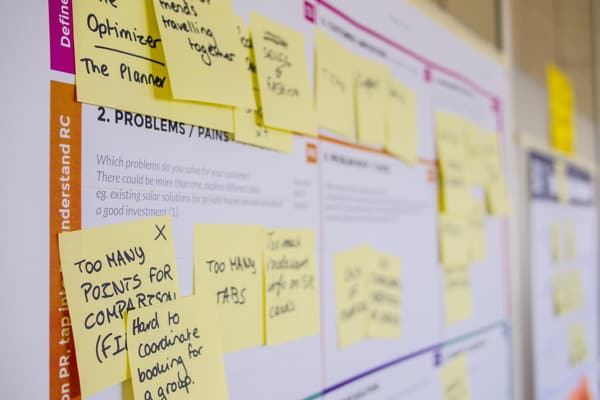5 Steps to Start With Your MVP
The definition of an MVP, or Minimum Viable Product, is the first step in every project. MVPs are a fantastic way to test a concept, before investing a lot of money and time. The core set of features that add value to consumers is known as an MVP.
Defining an MVP will help you: Reduce the amount of work required to create an MVP to decrease project failure. Make a list of the most important features and rank them in order of importance, get real-world feedback early on, begin the process of iterative building and gradually deliver value to the consumers. The aim of an MVP is to keep it as small as possible while also providing value to the customer. Working with your end users to find out what is most important for them will help you create an MVP, faster and cheaper, and will give you ability to pivot early on. Following a sound procedure and taking some time to prepare ahead of time will make creating an MVP much simpler.
1. Recognize the scope of the problem's severity.
Understanding the problem scope is the first step in defining an MVP. Finding future customers, or professionals in the industry is the easiest way to start diving into the core of the problem you are trying to solve. Even if you are an expert, check out those in the area and elicit their input. Instead of focusing on what they think they want or need, try to figure out what the issues are. Most consumers will be able to share their dilemma much easier than they will be able to tell you what they require to resolve it. Identify and survey potential customers before you start building MVP. Consult with business leaders and agencies who will be using the b2b tools to assess if the approach you're creating will be useful.
2. Research competitors
In addition to talking to potential customers, thorough research should be carried out to check for any existing solutions which are trying to address the same problem. Check their reviews, see what they are doing great and what they're doing wrong. It's time to define your MVP after you've done your research.


3. List the most critical features
Pinpointing the most important features of your product is crucial for defining the MVP. Begin by making a list of all the features you might think of.
What is the most critical feature of the product?
What are the features that customers can't live without?
What distinguishes your product and the competitors?
What features would be nice to have?"
There are no bad ideas and this is purely a brainstorming exercise. Make a list of it all and don't be too critical. Don't devote too much time to each for this exercise. You will return to this list later on.
4. Prioritize list of the most significant features.
Once you've written down all of the features, it's time to prioritize them. The target is to rank all of the features from most important to least important in a list. Prioritize based on three factors: importance, complexity (cost), time. Keep in mind that you're creating an MVP, not a complete product. For example, do you need a payment system right away or can it wait? Simply create a spreadsheet with one feature per row. Begin by comparing the feature at the top of the list to the feature immediately below it. Is the top feature more critical than the bottom one, and does it give more benefit to users? If this isn't the case, position the first feature underneath the second. Move the most important features above the less important ones when you go down the list of features. Go on with the exercise until you have a list that is in order. You should be very critical at this point and take your time.


5. Pick the MVP's scope.
You can now establish the scope of your MVP using your prioritized list of features.The aim here is to find the core set of features that are still useful to your customers. Work your way down from the top of the prioritized feature list. Examine the first feature and consider whether it is adequate to provide value to the users on its own. If it is, you should stop there. Continue down the list if the answer is no. Your MVP would be the minimum set of features you selected. Be rigorous when reviewing the features you selected to ensure that they're valuable to customers on their own. For small-scope MVPs, the greater the probability of success. Furthermore, you will be able to begin collecting input from customers, which will assist in potential prioritization attempts and could also uncover new issues to solve.
What are the other features you didn't decide to implement for MVP?
All of the features that were not included in your MVP should be prioritized and added to the product's roadmap. You'll have the list of feature choices to use in your product after the MVP is developed based on your roadmap, as well as input from your customers, which you will quickly improve by incremental and iterative growth.
Start building!
You're now on the way to reducing the time and resources required to bring your product to life, while simultaneously adding value to your customers and learning from them early on.
Get in touch
818-303-6921
foo@iviju.com
We will respond to you within 24 hours.
We'll sign an NDA if requested.
No account managers you'll be talking to tech experts and product people who are going to work with you later on.
